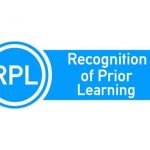Pic courtesy: ASQA’s current model of self-assurance
As a registered training organisation (RTO), we are required to have systems and processes in place to ensure our practices meet the Standards for Registered Training Organisations 2015. Part of these requirements includes having a compliance process and system for reviewing our current training and assessment practices, systems, and policies.
As part of our commitment to quality, we continually review, improve and self-assure our practices. This helps us to maintain compliance with the Standards and to improve the quality of our services.
This includes seeking feedback from all stakeholders including students and other involved parties, to identify opportunities for improvement and maintain confidence in the delivery of your services.
Self-assurance is another key part of ensuring the quality of your training provision. This means having your own systems and practices in place to systematically monitor, evaluate and improve your performance. By doing this, you can be sure that you’re providing the best possible service to your students.
Reviewing and improving a training organisation is an ongoing process. It requires constant vigilance, self-assessment and a willingness to change.
Organisations must be able to adapt to the ever-changing needs of their clients and the ever-changing landscape of the training industry. They must also be able to keep up with the latest research and developments in their field.
A good way to review and improve a training organisation is to periodically conduct internal and external audits. These audits can help identify areas where improvements are needed.
External audits can be conducted by independent bodies such as accreditation organisations or government agencies. Internal audits can be conducted by the organisation itself or by an external consultant.
Either type of audit should include a review of the organisation’s policies and procedures, as well as its training programs and materials.
Audits should also include interviews with staff, clients and other stakeholders. These interviews can provide valuable insights into how the organisation is perceived by others and where improvements might be needed.
Organisations should also periodically review their financial statements to ensure they are using their resources effectively. Financial reviews can help identify areas where cost savings could be made or where revenue could be increased.
Finally, organisations should always be looking for ways to improve the quality of their service. This can be done through customer satisfaction surveys, feedback forms and other mechanisms.
So, what does all this mean in practice? Here are some strategies on how to ensure that you’re continually reviewing and improving your training and assessment practices:
- Seek feedback from all stakeholders/involved parties.
- Use this feedback to identify areas for improvement.
- Change your training and assessment practices accordingly.
- Keep a close eye on your performance through internal and external audits, and make sure that you’re meeting your own high standards.
- Check your data and indicators regularly to ensure that you are providing a high-quality service.
- Monitor your own performance and compare it against national standards.
- Evaluate your performance to identify areas for improvement and make changes to your services accordingly.
- Always be open to making further improvements, no matter how small they may be.
By following these strategies, you can be sure that you’re providing the best possible service to your students, and that your training provision is of the highest quality.











